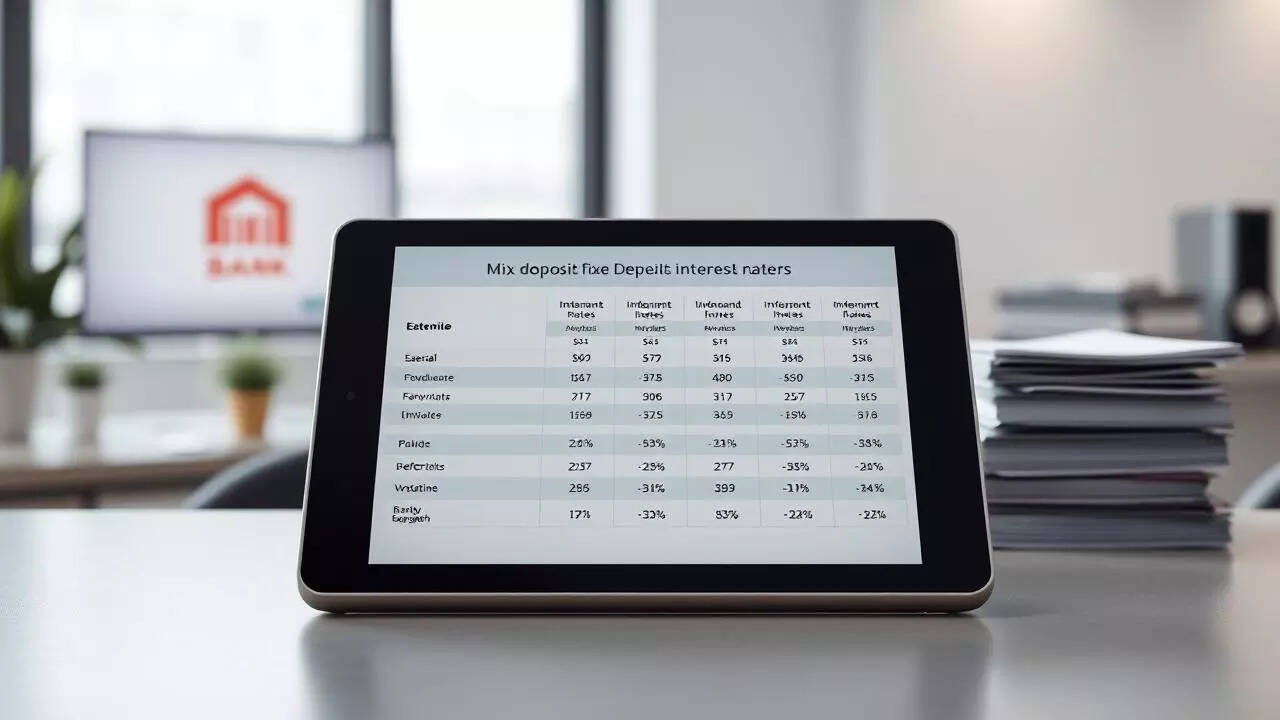FD Interest Rates 2025: Compare Top Indian Banks Offering Up To 8.05% Returns On Fixed Deposits
Fixed Deposits (FDs) continue to remain one of the most reliable investment avenues for Indian savers who prefer stability over market volatility. With rates ranging between 3% and 8% per annum, FDs provide predictable returns and capital safety. Senior citizens enjoy an additional 0.5% interest in most banks, making it a preferred choice for retirement planning. According to experts, comparing interest rates before investing can help maximise earnings, especially as banks revise rates in line with changing economic and liquidity conditions.
Experts explain that SFBs are using higher FD rates to attract new customers and strengthen their funding base. Many of them also extend additional benefits for senior citizens, ranging between 0.05% and 0.5%, depending on tenure. This makes SFBs an appealing choice for older investors who rely on regular income from their savings.
While these rates may not match the high yields of SFBs, experts note that public sector banks enjoy strong depositor trust because of their government backing and nationwide reach. For conservative investors prioritising safety and stability, these remain dependable options.
According to financial planners, private banks attract depositors through a combination of moderate returns, flexible tenure options, and efficient digital banking services. These features make them ideal for investors who value both convenience and credibility.
Experts suggest that senior citizens maintain a balance between small finance and established banks to diversify risks. Splitting deposits across tenures and institutions can help optimise returns while keeping funds secure.
Experts advise that investors regularly review FD rates, as banks often revise them in response to monetary policy changes. A well-informed approach allows individuals to switch to higher-yielding options and make the most of their investments.
Disclaimer: This article is for informational purposes only. Interest rates are subject to change based on bank policies and regulatory updates. Readers are advised to verify current rates and consult financial experts before making any investment decisions.

Small Finance Banks Lead With Attractive Rates
Small Finance Banks (SFBs) are currently offering some of the most competitive FD rates in the country. As of mid-October 2025, Suryoday Small Finance Bank provides the highest return of 8.05% per annum, followed closely by Jana Small Finance Bank at 8%, and Utkarsh Small Finance Bank at 7.65%. These institutions are particularly attractive for depositors seeking better long-term returns on three- or five-year deposits.Experts explain that SFBs are using higher FD rates to attract new customers and strengthen their funding base. Many of them also extend additional benefits for senior citizens, ranging between 0.05% and 0.5%, depending on tenure. This makes SFBs an appealing choice for older investors who rely on regular income from their savings.
Public Sector Banks Maintain Stable Returns
Public sector banks continue to offer steady yet comparatively lower FD rates. The State Bank of India (SBI) currently offers returns ranging between 6.05% and 6.60%, depending on deposit duration. Similarly, Union Bank of India and Bank of Baroda are offering rates between 6.25% and 6.60%.While these rates may not match the high yields of SFBs, experts note that public sector banks enjoy strong depositor trust because of their government backing and nationwide reach. For conservative investors prioritising safety and stability, these remain dependable options.
Private Banks Balance Reliability And Returns
Private sector banks such as HDFC Bank, ICICI Bank, and Axis Bank are maintaining consistent FD rates, with the highest capped at 6.60% per annum. The average one-year FD rate across these banks stands around 6.25%, while three- and five-year deposits generally offer up to 6.60%.According to financial planners, private banks attract depositors through a combination of moderate returns, flexible tenure options, and efficient digital banking services. These features make them ideal for investors who value both convenience and credibility.
Senior Citizens Gain From Additional Interest
Across almost all banks, senior citizens are entitled to an extra 0.5% interest rate on their FDs. This helps retirees earn slightly better returns from their life savings. For example, a senior citizen investing in an FD offering 7.5% could earn up to 8% annually, ensuring a more comfortable and predictable income stream.Experts suggest that senior citizens maintain a balance between small finance and established banks to diversify risks. Splitting deposits across tenures and institutions can help optimise returns while keeping funds secure.
Choosing The Right Fixed Deposit
Before investing in an FD, it is vital to compare interest rates, tenure options, and compounding frequencies across banks. While small finance banks may promise higher returns, depositors should also assess the institution’s stability, customer service, and deposit insurance coverage under the Deposit Insurance and Credit Guarantee Corporation (DICGC).Experts advise that investors regularly review FD rates, as banks often revise them in response to monetary policy changes. A well-informed approach allows individuals to switch to higher-yielding options and make the most of their investments.
Disclaimer: This article is for informational purposes only. Interest rates are subject to change based on bank policies and regulatory updates. Readers are advised to verify current rates and consult financial experts before making any investment decisions.
Next Story